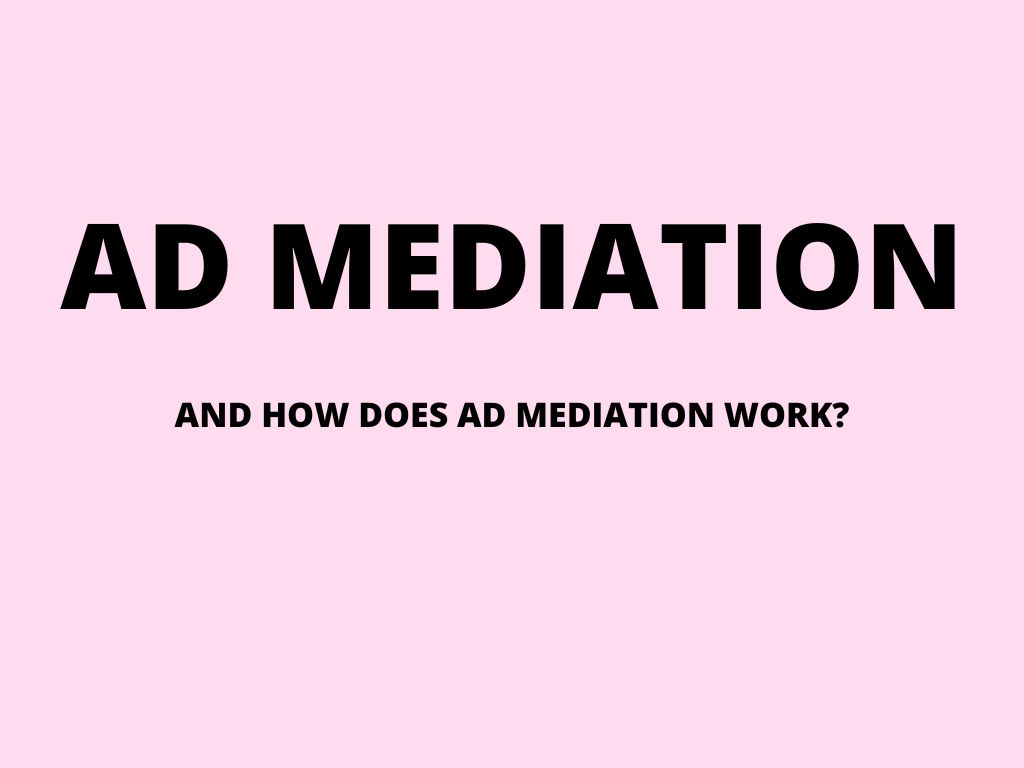
Ad mediation – what is it?
Ad mediation streamlines the handling of numerous ad networks via a singular SDK, aiding publishers in enhancing CPMs, fill rates, and overall efficiency.
What is ad mediation – understanding ad mediation
Ad mediation platforms offer app publishers the convenience of managing diverse ad networks from a unified platform, simplifying both reporting and optimization processes. In its absence, publishers would be tasked with navigating each ad network via their distinct SDKs and platforms.
Through ad mediation platforms, publishers can boost their inventory sales and elevate fill rates. This is achieved as the platform prompts ad networks to compete in bidding against one another. Consequently, publishers select the top bid, ensuring maximum fill rates and consequently amplifying eCPMs.
How does ad mediation work?
Ad mediation platforms aid advertisers in boosting revenue by allocating ad space through two main methods: waterfall bidding and in-app header bidding.
How is in-app header bidding executed?
In-app header bidding leverages programmatic techniques, allowing several advertisers to simultaneously bid for a designated ad slot. The top bidder secures the space but only pays a cent more than the bid of the second-highest contender. This approach ensures that publishers maximize their inventory’s value while advertisers obtain the space at a market-competitive price.
How does waterfall bidding work?
Waterfall bidding, an older technique, is especially favored by publishers aiming to swiftly offload residual inventory. Here’s a breakdown of the process in five stages:
- Upon initiation of a session and an impending ad request, the mobile app communicates with the ad mediation platform through the SDK.
- The platform discerns the suitable ad network to display the ad and consequently arranges an order of potential ad networks.
- Instead of randomly choosing, the mediation platform evaluates each network, prioritizing those with predicted superior performance. However, there are instances where certain networks might be given preference and solidified in a position, regardless of anticipated outcomes.
- The mediation platform then approaches the highest-ranking ad network to cater to the ad request. If this network fails to meet the request, the opportunity cascades to the next in line. This sequence persists until the ad slot is occupied.
- Finally, the chosen ad is showcased on the mobile app via the SDK.
What advantages do they offer?
A primary challenge for publishers is enhancing the sale of their ad inventory, referred to as fill rates. By incorporating more ad networks and prompting advertisers to competitively bid for ad space, ad mediation platforms facilitate this.
These platforms empower publishers to oversee multiple ad networks via a single unified platform and SDK. Unlike the tedious task of individually managing each ad network interface, campaign managers gain a consolidated view of all their networks. This holistic perspective opens doors to numerous avenues for selling ad space and amplifying campaign efficiency on a grand scale.
With ad mediation platforms, publishers can fine-tune parameters like CPMs, ARPPU (Average Revenue Per Paying User), ARPDAU (Average Revenue Per Daily Active User), ARPDEU (Average Revenue Per Daily Engaged User), fill rates, and beyond. In essence, these platforms are the linchpin for scalability, streamlined management, and enhanced efficiency.
However, it’s worth noting that giants like Facebook and Google don’t fully integrate their data with ad mediation platforms. Consequently, in specific scenarios, campaign managers might have to resort to supplementary platforms for campaign management.
The leading 4 mobile ad mediation platforms
Many ad mediation platforms are available today, each offering a variety of bidding options, reporting capabilities, and integrations. Among the most prominent platforms are AdMob by Google, ironSource, MoPub, and Max.
How can you select the best ad platform for your needs?
Given the plethora of platforms available, making the right choice can be daunting. Consider these essential questions to pinpoint the most suitable ad mediation platform:
- Which ad network is supported? Ensure both your current and prospective future ad networks are seamlessly integrated into the platform.
- How intuitive is the user interface? The main advantage of these platforms is simplifying campaign operations. Ensure that the reports are user-friendly and the processes enhance efficiency.
- How consistent is the server’s performance? Partnering with a platform that frequently experiences downtime can be costly. The more unreliable the server, the greater the potential revenue loss.
- What additional campaign optimization capabilities do they offer? Investigate how the platform aids in refining campaign outcomes. Do they have features like audience segmentation and campaign testing? Moreover, gauge the quality of their customer service and their measures for data protection.
Key information about ad mediation to remember
- Ad mediation platforms simplify the process for app creators by centralizing the management of various ad networks, enhancing reporting and fine-tuning.
- These platforms boost fill rates and elevate CPMs by prompting ad networks to compete for your advertising space.
- Ad mediation platforms primarily use two bidding strategies: header bidding and the more traditional waterfall approach.
- Different ad mediation platforms have distinct features; it’s essential to inquire appropriately to ensure the platform aligns with your specific requirements.
Was this article helpful?
Support us to keep up the good work and to provide you even better content. Your donations will be used to help students get access to quality content for free and pay our contributors’ salaries, who work hard to create this website content! Thank you for all your support!
Reaction to comment: Cancel reply